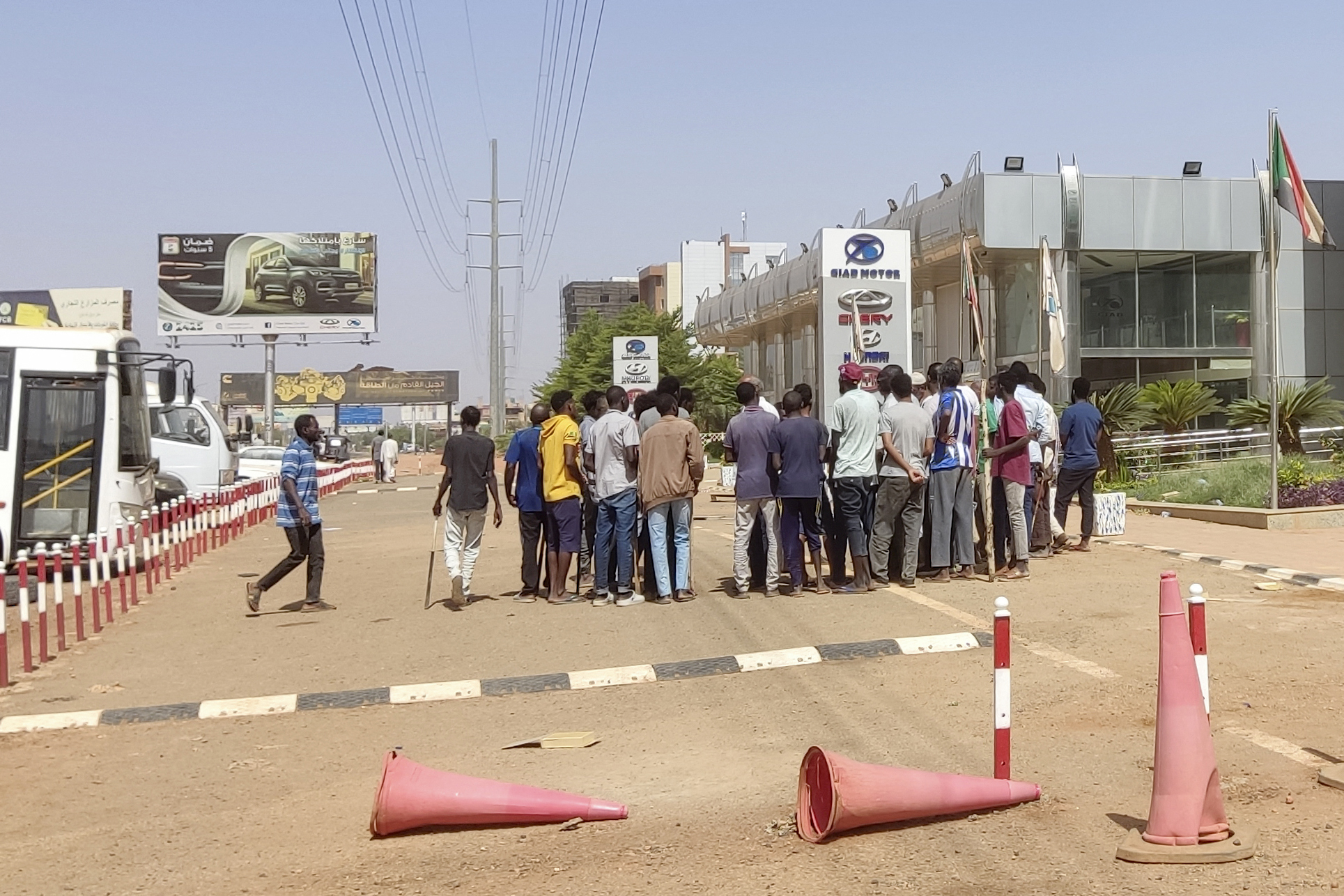Prime
Unrest in Sudan could dampen the East African region’s economic dividends

Locals gather after kicking out a group of looters who broke into a car showroom in southern Khartoum on May 7, 2023 as fighting continued in the Sudanese capital since battles broke out on April 15 between rival generals and the forces they command. PHOTO/AFP
In the wake of the Covid-19 pandemic, East African countries faced an economic downturn exemplified by stagnated economic growth due to low output and mired private sector growth.
This instigated regional governments to take up loans from domestic and external markets to majorly finance pandemic-related issues.
As if this was not enough, the Russia-Ukraine duel that started in February 2022 also took its toll on the regional economies by imposing external shocks on consumption and expenditure patterns of households through elevated fuel prices which later led to the rise in inflation of commodity prices.
In order to address this, East African countries applied measures based on the available policy levers, which to some extent were not as effective. For instance, Tanzania, Kenya, and Rwanda opted to utilise their fiscal policy by extending subsidies such as oil subsidies to bring down prices. These however didn’t necessarily address the problem of rising commodity prices that topped the pack amongst other economic problems.
Uganda government however desisted from the Kenya and Rwanda policy direction on grounds that subsidies are not efficient in supporting those most affected and they are not sustainable. This has slowly pulled off over time and we are beginning to observe a decline in inflation from 10.2 percent in December last year to 9.0 percent in March this year, which is tending to the inflationary target of 5 percent.
Nonetheless, the other East African countries have also made some economic strides towards lowering inflation despite their earlier government interventions of using subsidies. For example, official national statistics indicate that Kenya’s inflation dropped from 9.5 percent in November last year to 9.2 percent in March, while in Rwanda, overall inflation dropped from 33.8 percent to 31 percent in the same period.
Also, the recent IMF Sub-Saharan outlook indicates optimistic growth projections for the region, Uganda, Tanzania, Rwanda, and Kenya are poised to grow at 5.7 percent, 5.2 percent, 6.2 percent and 5.3 respectively by the end of 2023. That said, these significant economic milestones that the East African region is beginning to realise could again be at risk because of the recent political unrest brewing northwards of the region, in Sudan.
Hitherto, ever since the former leader was deposed, Sudan has been a boiling pot waiting to overflow.
This has been vindicated by the recent duel that broke out internally between the two factions with varying interests. Due to its proximity and strategic position with the East African region, the war in Sudan poses a threat to the region’s economic dividends achieved out of different recent hardships.
The East African countries eye Sudan and its neighbouring countries like the Central African Republic, Egypt, and others on that stretch as export partners for its agricultural produce like tea, coffee, and rice grains.
This later feeds into the computation of their trade balance sheet and then factored into the size of the economy (output). If it persists, the armed conflict in Sudan will dent the movement of goods, services, capital, and people, which are crucial functions of trade and commerce. It also puts a strain on the region’s already exhausted fiscal space by creating a refugee problem. As it turns out, the East African countries will likely host the refugees resulting from this war. Thus, this will also affect the region’s budget position as it could be a recipe for supplementary budget requests to address the refugee problem.
Like the former, should the war in Sudan escalate into a full-blown war for a longer period, the East African countries must brace themselves for what might come. Importantly, they should build buffers within their contingency plans and strategies to cushion them from any anticipated shocks from this war.
Ronald Ochen, Economist at the Civil Society Budget Advocacy Group (CSBAG)[email protected]




